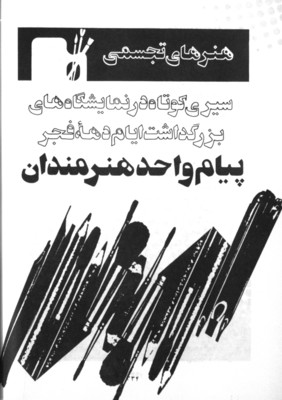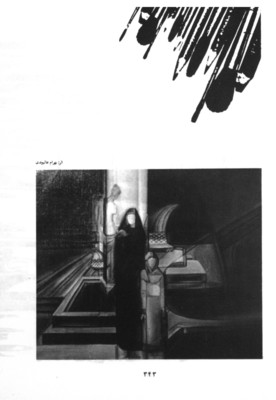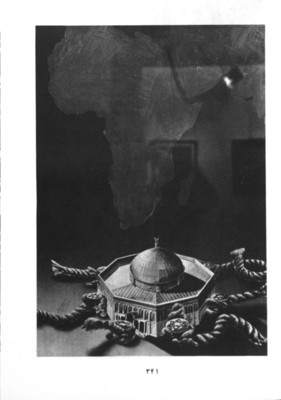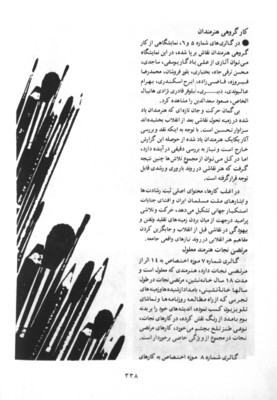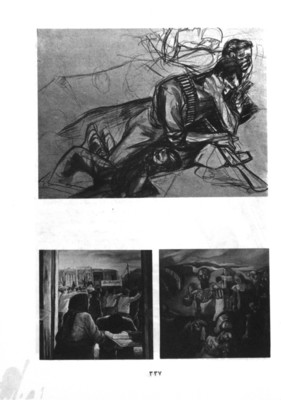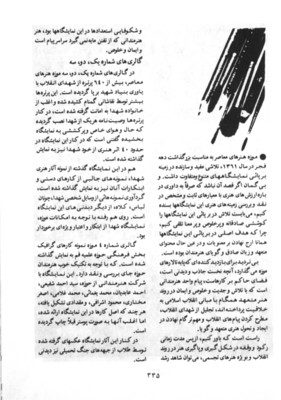Reprint
Visual Arts
A Short excursion at the Exhibitions Held on the Occasion of Dahe-ye Fajr1
The Unitary Message of the Artists
On the occasion of the anniversary of Dahe-ye Fajr1 in 1985, the Museum of Contemporary Art in Tehran has made a useful and constructive effort by holding a series of diverse and different exhibitions. Regardless of merely judging the artistic value of such exhibitions with fixed and specified standards in art criticism and review, the attempt to hold the exhibitions is undoubtedly an honest, pure, and significant one. That is because the main objective of these exhibitions has been to value the spirituality and at the same time the committed content and the honest and expressive language of the works of the artists exhibiting.
Certainly, for a visitor who steps into the galleries of the museum, what is most interesting is the atmosphere that is dominant in the works, the unitary message of the artists, who, with a great deal of effort, seriousness, purity and faith in a trend of art that is committed to, and harmonious with, the foundations of the Islamic revolution have created their works: honouring the martyrs of the revolution, promoting the messages of the revolution, and most important of all, attempting to create and develop a kind of committed and expressive art.
It is true that after a period of stagnation and delay in the formation and establishment of the arts in the trend of the revolution, especially in the field of the visual arts, now we are witnessing the growth and blossoming of talents in these exhibitions. This is art by artists who are not motivated by amusement but full of messages, faith, and purity.
Galleries 1, 2, and 3
In galleries 1, 2, and 3 of the Museum of Contemporary Art, there are more than 640 portraits of the martyrs of the revolution in a display sponsored by The Martyrs Foundation. The portraits are mostly created by anonymous painters and borrowed from the families of the martyrs. Beside the portraits there are the last will and testament of each of the martyrs, giving the exhibition a particular poignancy. It is worth mentioning that there are also about 40 artworks by some of the martyrs themselves.
In addition to the artworks, there are also interesting samples of the martyrs’ artefacts . A collection of personal belongings of the martyrs, such as clothing and helmets, is another attractive element in the exhibition. All in All, regarding the possibilities of the museum, the exhibition of the martyrs was an innovation with a good standing.
In gallery 4, samples of graphic works from the cultural department of the Qom Seminary has been exhibited, which, regarding the good techniques of the artists of the seminary, deserve to be reviewed. In this section, the works of the artists Seyed Ahmad Shafiei, Ahmad Abedian, Mohammad Yaghmaei, Mohammad Gholami, Asghar Mokhtari, Mahmood Ashrafi, and Meghdadi are exhibited. The originals of the works are exhibited in the gallery though the posters of most of them were printed before.
Among the exhibited works, the photographs taken by the clerics at the front lines of the imposed war are also worth seeing.
The work of a Group of Artists
In galleries 5 and 6, there is a group exhibition of the works of the artists Ali Yadegar yusofi, Sajedi, Mohsen Targhijah, Bakhtiari, Boloorfrooshan, Mohammadreza Firouzeh, Ghazizadeh, Iraj Eskandari, Bahram Alivandi, Dabiri, Niloufar Ghaderinezhadi, Hanibal Alkhas. Masoud Saddedin.
Undoubtedly, the new life that the above-mentioned artists have given to the post-revolutionary painting is admirable. Although it is not possible to review or critique the works of each of the artists in this article, all of whom deserve careful attention, in general, it could be expected from the efforts that the art of painting is advancing remarkably.
In most of the works, the main content is recording the bravery and devotion of the Muslim nation of Iran and disclosing the crimes of Imperialism. It is a hopeful movement and an effort in elimination of imitation, mere amusement, and futility of the pre-revolutionary painting and replacing it with the concepts of the revolutionary art in accordance with the real needs of society.
Morteza Nejat, the disabled war veteran artist
Gallery number 4 is allocated to 14 works by Morteza Nejat, an artist who is disabled and has been housebound for 18 years. During these years he has depicted with colour pencil on canvas, the insights that he has gained from what he has read and experienced through studying the newspapers and watching the television. In Nejat’s works there is a kind of bitter humour which is unique to him.
1- Dahe-ye Fajr is ten Days of Aurora – the days of the victory of the Islamic revolution.
